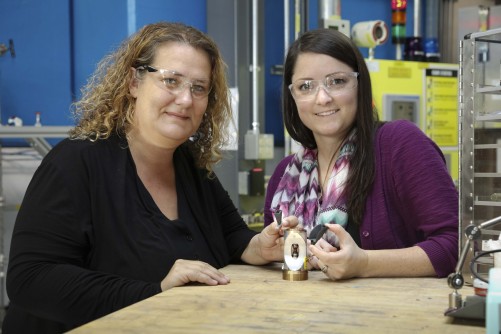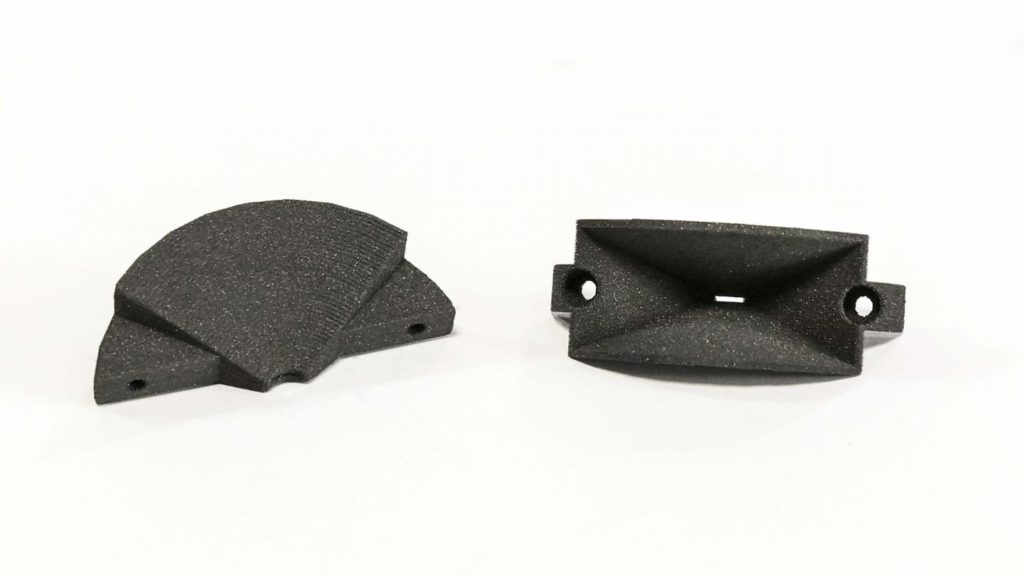It is always exciting to see the work of dynamic industry players merging, as in the latest deal between The Department of Energy’s Oak Ridge National Laboratory (ORNL) and ExOne, now allowing the Pennsylvania-headquartered leader in metal 3D binder jet printing technology to use one of the lab’s new methods.
Equipped with the license to use ORNL’s novel technique for 3D printing parts for neutron instruments, ExOne has plans to fabricate a light, metal composite developed for neutron scattering. This type of exercise allows the user to collect data on atoms and structures, offering accurate measurements and definition of neutron beams overall.
“Our work on collimators has been focused on tungsten infiltrated with copper for use in X-ray machines, computed tomography, or CT, scans and magnetic resonance imaging machines, or MRIs,” said Dan Brunermer, ExOne technical fellow. “The technology we have licensed from ORNL will allow us to build collimators for neutron scattering, and that requires a specialized mix of materials and post processing.”
Both ExOne and ORNL share extensive knowledge in additive manufacturing with metal; here, ORNL researchers have created a method for binder-jet printing with boron carbide—a type of ceramic that is infused with aluminum, resulting in a B4C – Al metal matrix composite. Not surprisingly, the initial prototypes for collimators were produced on an ExOne binder jet printer on-site at the Department of Energy’s Manufacturing Demonstration Facility at ORNL. They were then tested with actual neutron scattering instruments at the ORNL Spallation Neutron Source and High Flux Isotope Reactor.
Upon evaluation, results showed that the prototypes completed their mission in propelling neutrons into a ‘narrow trajectory,’ while also collecting others which may have strayed from the intended path—offering accurate scientific measurements.
“Machining a collimator through traditional manufacturing is quite challenging and costly,” said ORNL’s David Anderson, co-inventor and neutron scattering instrument engineer. “But they’re needed to reduce background neutron radiation at neutron scattering instruments. Most neutron scattering instruments, including those at SNS and HFIR, have them.”

ORNL’s Bianca Haberl and Amy Elliott hold 3D-printed collimators. Co-inventors of the ORNL technology include David Anderson, Corson Cramer, Amy Elliott, Garrett E. Granroth, Bianca Haberl, James O. Kiggans Jr., Anibal J. Ramirez-Cuesta, Derek H. Siddel and Matthew B. Stone. (Photo Credit: Genevieve Martin/Oak Ridge National Laboratory, U.S. Dept. of Energy)
Employing the classic benefits of 3D printing and AM processes, ExOne hopes to manufacture new, more affordable collimators for scientists around the world studying neutron beamlines. With the bottom line significantly decreased for the production of the devices, the goal is for users to have a new, customized collimator for every experiment performed.
“When they start to see experiment-specific collimators and how they have the potential to improve their test results, we hope to see the design, order and fabrication of these devices become the norm and not the exception,” Brunermer said. “Our collaboration continues to prove its value to the manufacturing industry with the outcome of projects like these. It benefits ExOne, it benefits the customers of these collimators and it feeds money back to the American taxpayer.”
ORNL has a long and impressive list of 3D printing research projects and collaborations behind them—from a recent project in exploring coal materials to unique experimentation with 3D printed sensors, working with the Navy, and so much more. ExOne continues to advance in offering binder jetting techniques, releasing new materials to users, and even testing devices like reusable metal filters during the COVID-19 pandemic. What do you think of this news? Let us know your thoughts! Join the discussion of this and other 3D printing topics at 3DPrintBoard.com.
[Source / Images: Newswise]Subscribe to Our Email Newsletter
Stay up-to-date on all the latest news from the 3D printing industry and receive information and offers from third party vendors.
You May Also Like
Further Understanding of 3D Printing Design at ADDITIV Design World
ADDITIV is back once again! This time, the virtual platform for additive manufacturing will be holding the first-ever edition of ADDITIV Design World on May 23rd from 9:00 AM –...
3D Printer Maker EVO-tech Reborn as NEVO3D — Once More With Feeling
EVO-tech was a 3D printing service and original equipment manufacturer established in 2013 and based in Schörfling am Attersee, Austria. The company produced high-quality material extrusion systems featuring linear bearings,...
3D Systems Brings 3D Printed PEEK Cranial Implant to the U.S. with FDA Clearance
For more than 10 years, 3D Systems (NYSE:DDD) has worked hand-in-hand with surgeons to plan over 150,000 patient-specific cases, and develop more than two million instruments and implants from its...
CDFAM Returns to Berlin for Second Annual Symposium
The second CDFAM Computational Design Symposium is scheduled for May 7-8, 2024, in Berlin, and will convene leading experts in computational design across all scales. Building upon the first event...
































